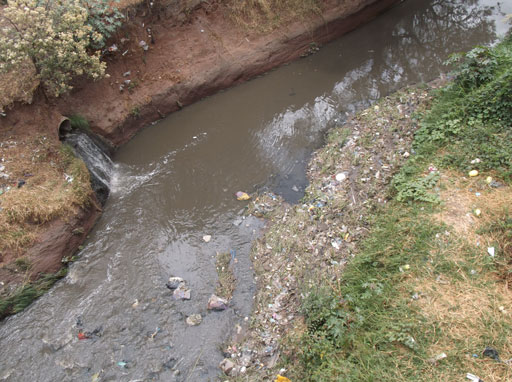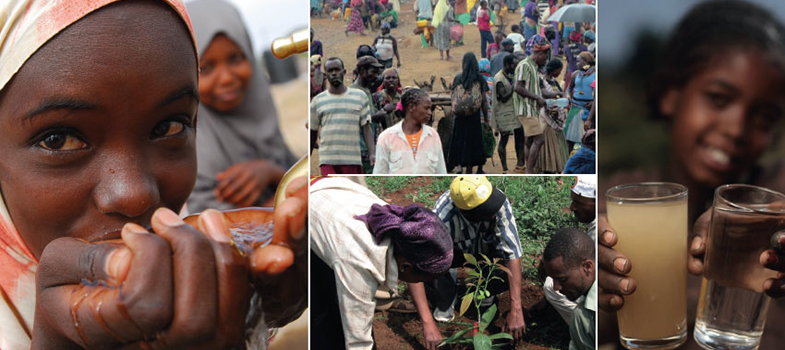2.3 Liquid waste
Liquid waste includes human excreta (both faeces and urine), industrial wastewaters, and other forms of waste from water-using activities in homes and institutions.
Households produce liquid waste from baths, showers and handwashing, as well as from washing dishes and clothes. This liquid waste is called greywater.
Faeces and urine are called blackwater. Blackwater is produced from water-flushed toilets and contains excreta, the flushing water and the anal cleansing materials (e.g. toilet paper) that people dispose of when using toilets. This waste may be transported in sewers to a treatment plant but is more likely to be held in a septic tank, which provides partial treatment of human waste. Liquid waste also includes human waste in pit latrines, even though there is no added water.
As you can imagine, public and private institutions, such as restaurants, cafeterias, hotels, bus terminals and market places which service large numbers of individuals, produce significant volumes of both blackwater and greywater.
Industries also release a significant volume of liquid waste. In addition to waste produced by the workers during routine hygiene and sanitation activities, the processes in factories may produce liquid waste. For example, hide processing factories, coffee washing facilities, and building projects use large volumes of water. Sometimes the wastes include chemicals that have been added as part of the industrial process and may be toxic. If waste produced from these facilities is released directly to a nearby stream or river without prior treatment (see Figure 2.6), the environmental pollution risk and the effect on a community’s health is of significant concern.

Medical facilities such as hospitals and health centres produce large volumes of liquid waste because hygiene is critically important for healthcare. Such waste may contain dangerous pathogens and can present a significant health risk to visitors, patients, healthcare workers and people handling the waste. It is therefore crucial for liquid waste to be treated appropriately.
Liquid waste is mostly water but it may also include:
- human waste (faeces, toilet paper, urine, vomit and blood)
- pathogens such as bacteria, viruses and parasites
- organic matter (e.g. animal faeces, vegetable and plant pieces)
- chemicals (e.g. pharmaceuticals), industrial wastes and toxins such as pesticides from agriculture.
The detrimental effects of these constituents on the environment can be minimised or eliminated by applying appropriate transportation and treatment technologies. Liquid waste is ideally transported using a well-engineered network of pipes and canals. Treatment technologies for liquid wastes should be applied at the point where the wastes are produced or before they are released into the environment at a disposal site. However, in most urban areas of Ethiopia, both the transportation infrastructure and the appropriate treatment facilities are lacking, so liquid waste is often released into the environment without treatment (Figure 2.6). Eventually the contaminated water is likely to be reused by people living downstream, putting community health at serious risk.
2.2 Solid waste
